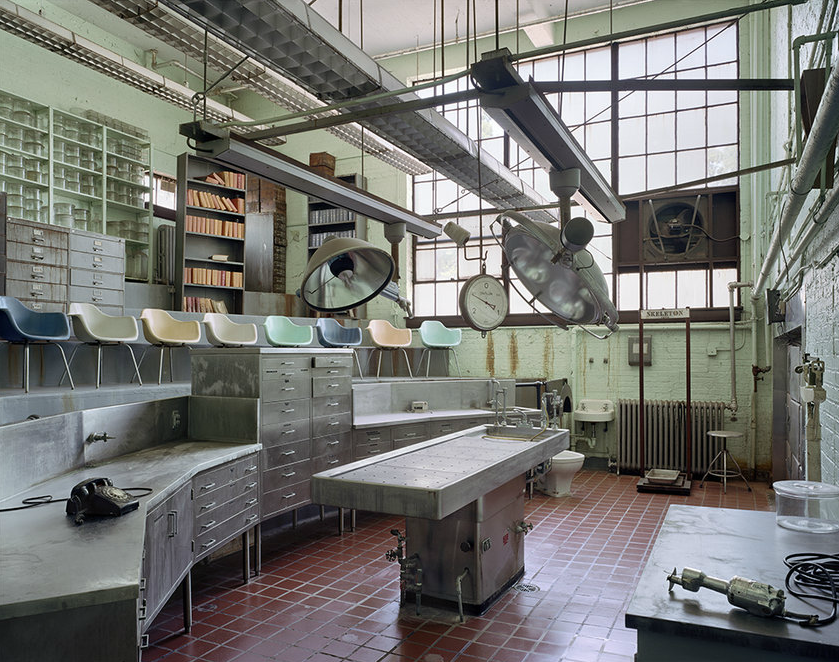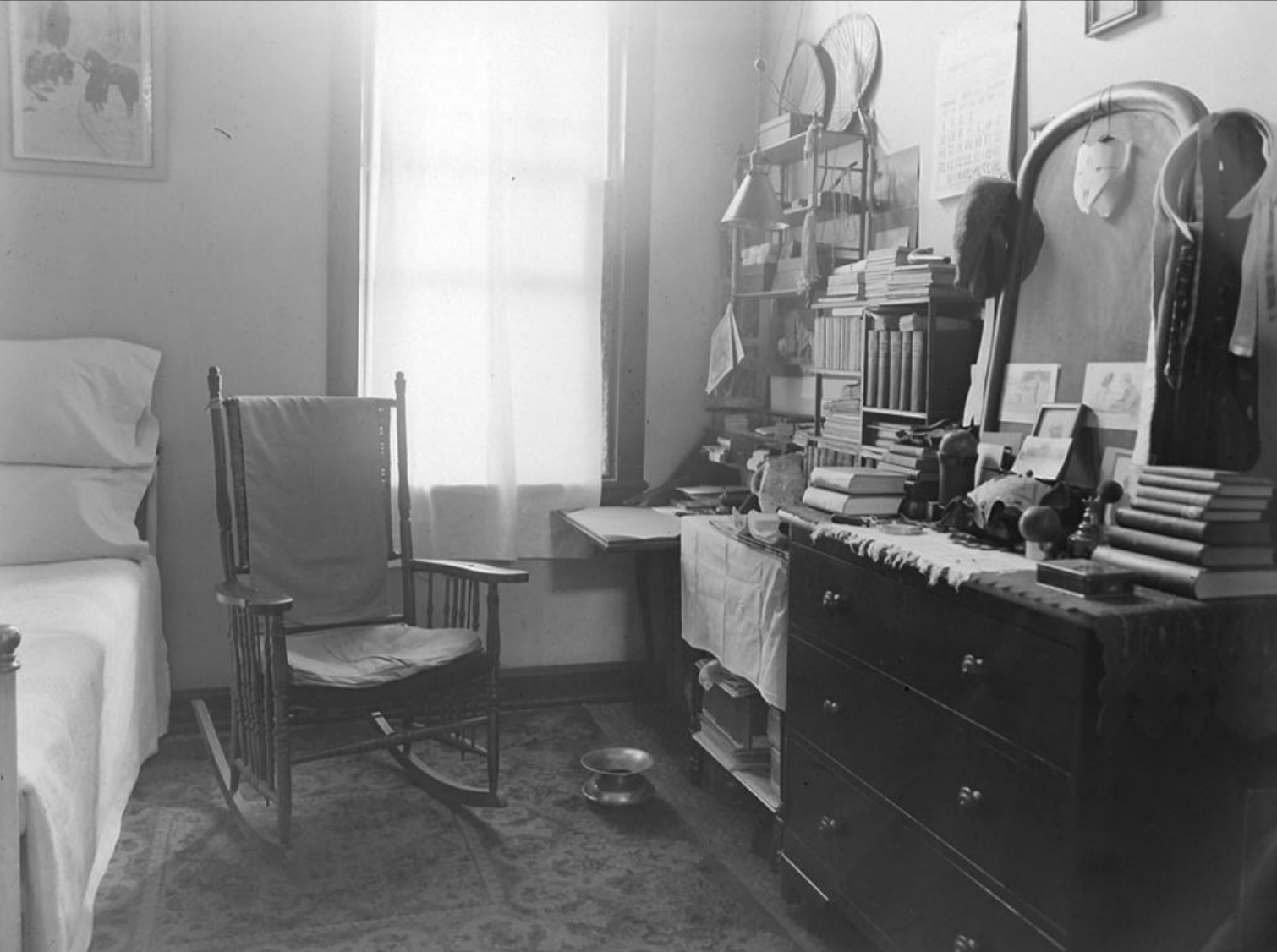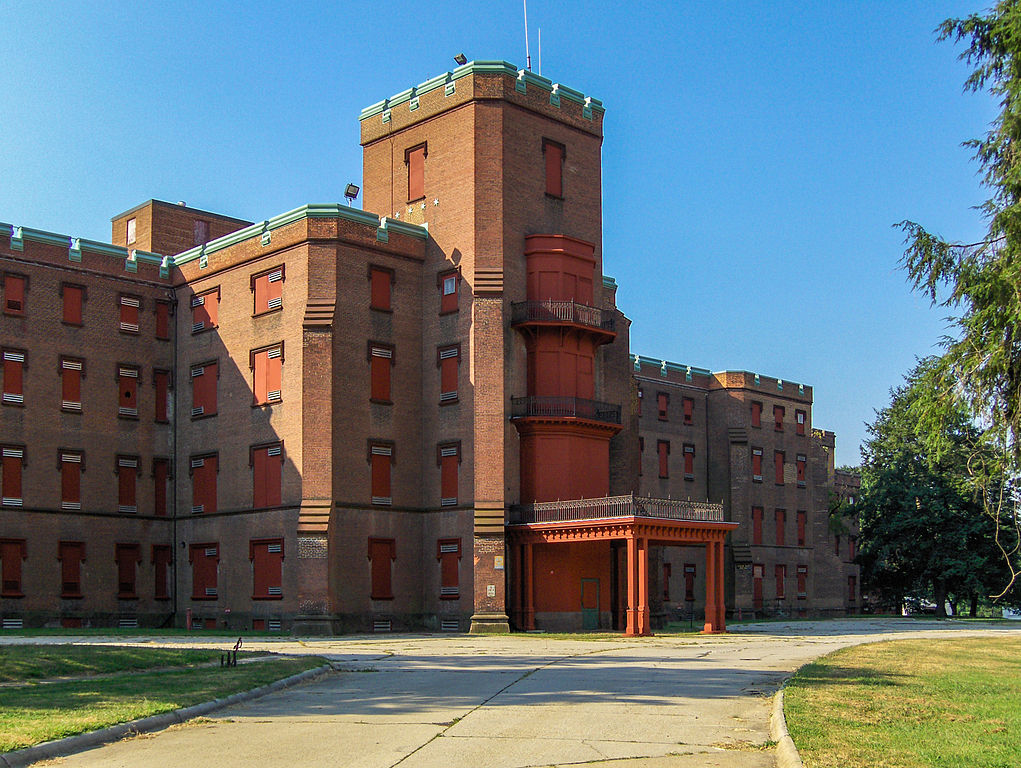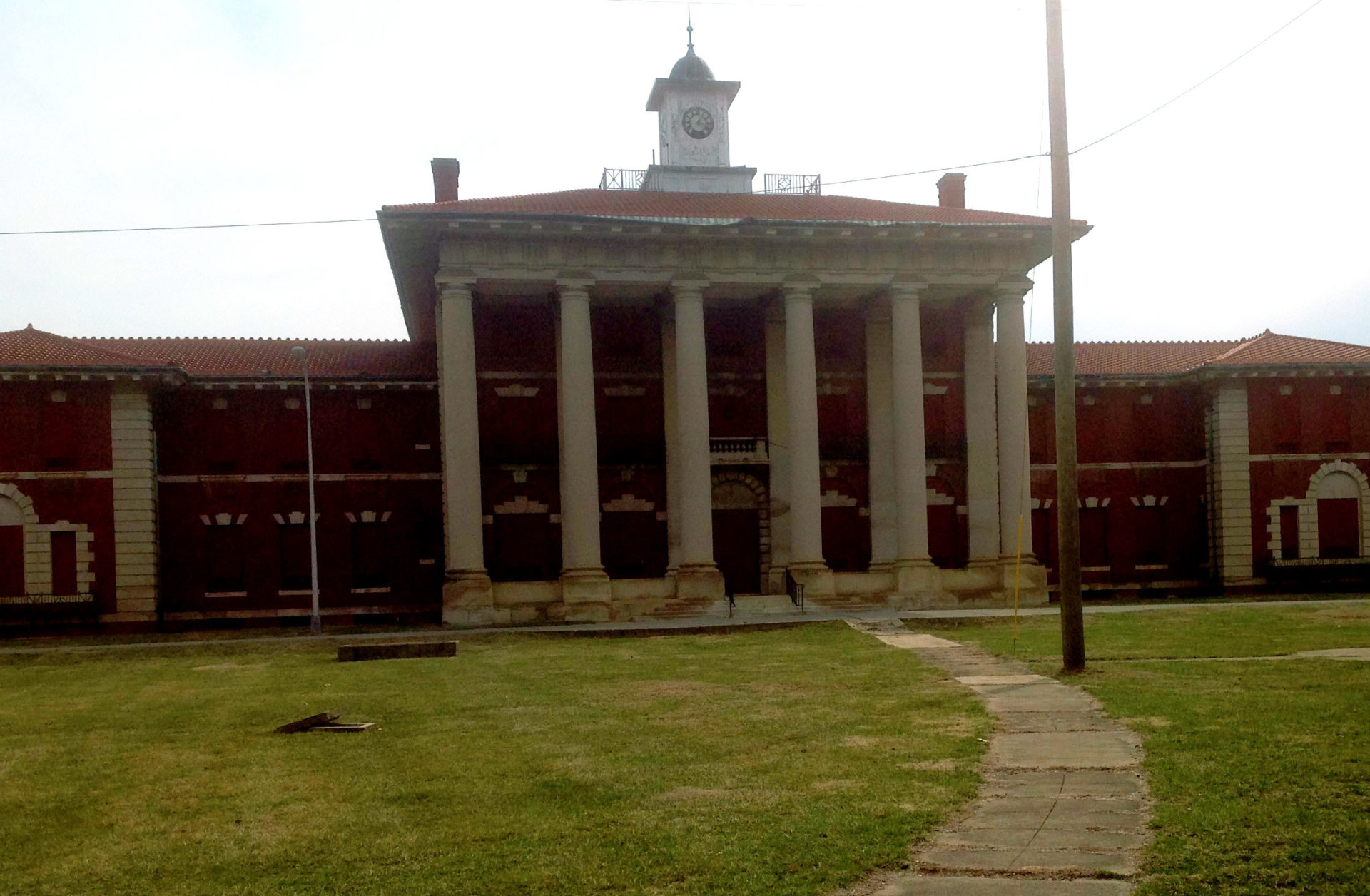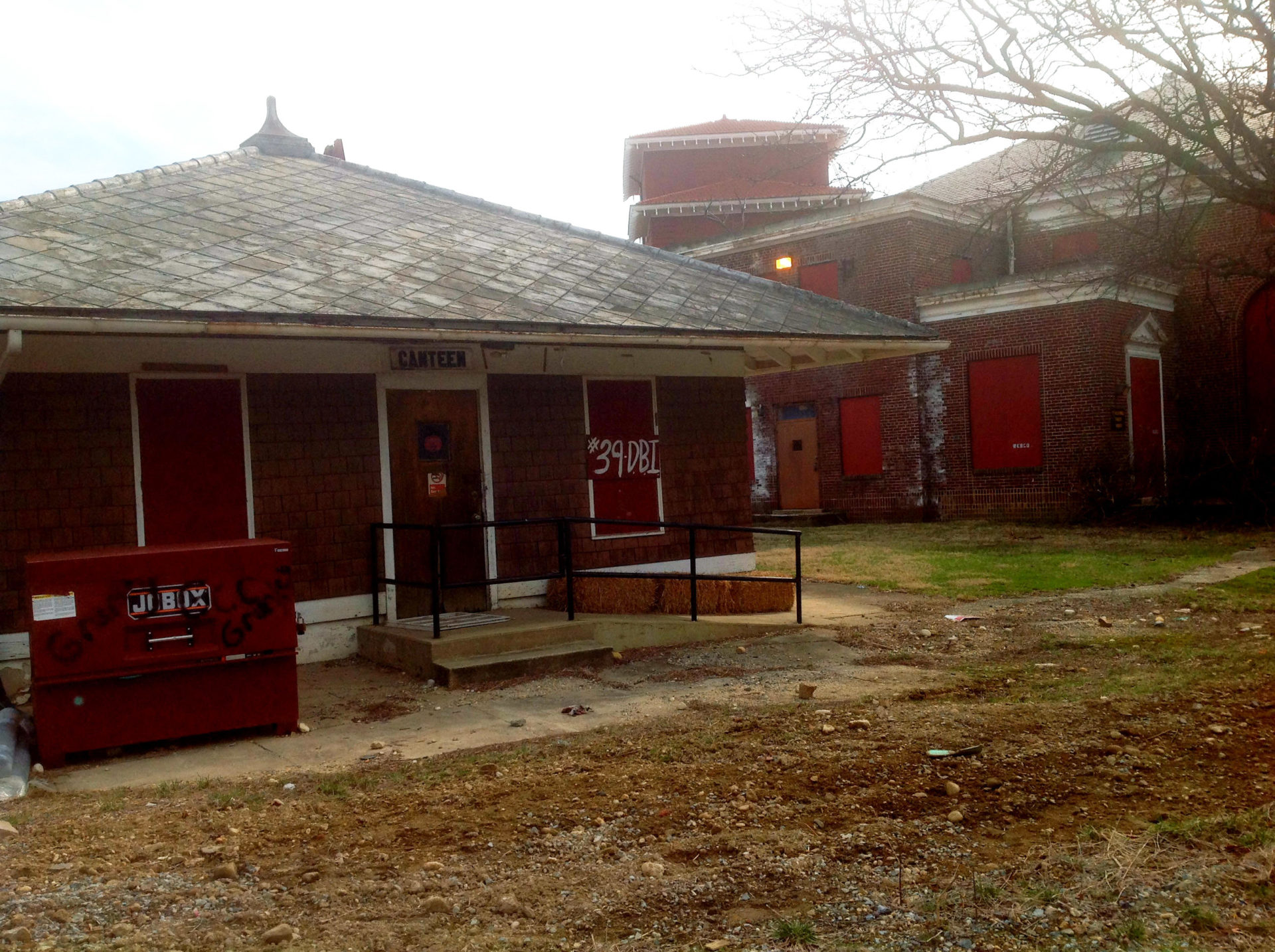Washington D.C. is often used as a backdrop for tales of idiosyncratic power (Veep, House of Cards, Homeland, 24, Newsroom, The West Wing, just to name a few) and why not? The architecture’s symbolism and ideology can be matched only by the cynicism and suspicion these structures inspire. So therefore it seems somehow fitting that DC’s next major addition, the Headquarters for the Department of Homeland Security (DHS), will be perched on a hilltop just across the Anacostia River, physically and gesturally overseeing all before it.
Yet beyond maintaining constant visuals on the terrain, this headquarters represents a change in the city’s views on temporality, functionality and even irony. Because this is a space with a past, one it both embraces and fears.
The Ghost Across the River
In 2007, the announcement came that a long abandoned former mental institution was to be renovated in order to create a headquarters for the DHS (the agency which oversees immigration, customs, border control and the secret service, along with several other federal functions). Aside from sounding like the plot to a bad action/horror movie, the site was a bit of an odd-duck: an enormous campus, fifteen minutes drive from the White House and full of old buildings barely anyone had ever heard of. For its own part, St. Elizabeths Hospital was founded in the 1850s as “The Government Hospital for the Insane”, hosting generations of doctors, nurses and patients. Some of which having been infamously linked to the powerful of DC, including: Ezra Pound, brought there on charges of treason in 1945; John Hinckley Jr., for shooting President Reagan in bizarre attempt to impress actress Jodie Foster in 1981; Richard Lawrence, who attempted to shoot President Andrew Jackson in 1835, failed, and was then beaten mercilessly by the President himself and Charles Guiteau, after killing President Garfield in 1881.
Unsurprisingly most of the campus was shut-down in the mid 1980s due to a Reaganite distaste of government dependence and dilapidating facilities. The staff argued, perhaps correctly, that the campus was simply not fit to successfully treat patients in a post-industrial society. Perceptions of mental health had changed and the enormous facility had become obsolete. For years afterwards, the campus served as a kind of spooky albatross with old, now homeless, patients still lingering around the grounds. Indeed the cost to maintain it was so great that in 1987, the federal government transferred responsibility of the eastern portion to the District of Columbia, hoping the city would make something of the land. They didn’t.
A foreboding shadow in an already violent part of the city, St. Elizabeths seemed to haunt governments both national and local: too big to be ignored and too old to be torn down, it was a comatose behemoth. That is until its need arose almost twenty five years after its abandonment.
Crazy Little Thing Called Administration
Without too much fanfare, the National Capital Planning Commission approved the Master Plan for site development on January 8, 2009, about a year after the initial proposal emerged. The most recent development to be completed on the site is the US Coast Guard Headquarters: a deceptively large LEED Gold building that looks like a layer-cake descending into the water, complete with moats and green roofs. Though with the federal site estimated at over 170 acres, 60 buildings and approximately 1.1 million gross square feet, when completed (sometime after 2018) it will be one of the most important government campuses in the entirety of the United States.
According to local historians, the layout of St. Elizabeths Main Building (A Gothic-Revival number in red brick which will be the DHS’ future headquarters) was as followed: Director’s office in the center, women to the east, men to the west with the most severe cases pushed to their respective edges, creating an unintended grayscale of doctors to patients. While this issue was corrected later, the notion that the hopeless cases are pushed from the center to the periphery, something poignant to urban development, even now. But perhaps more relevant in terms of the current construction is the question of the DHS’ chosen location. By choosing a site just outside of, but still overseeing downtown DC, is this development the surveillant doctor or the mental patient?
For those uninitiated in administrative history, the DHS was developed in the wake of 9/11 as a response to the determined “biggest failure” leading up to the event; the lack of communication between law-enforcement agencies. Essentially the DHS’ purpose is to streamline and centralize these operations, ironic given that prior to this permanent site, the department was spread over 40 buildings across the DC area.
As an entity, the DHS is often a target of suspicion as much as it is an observer of suspicion. Working constantly within the hot-button issues of defence and border control, stances on the DHS can swing wildly with public opinion. Sure, they watch. But at the same time, they are watched.
All in the Game
There’s an old fable from Oregon about a psychiatrist who works at a mental institution. One day he forgets his keys and is accidentally locked inside a cell. A new nurse is on duty and he tries to explain the situation, but she dismisses him, believing he is a lying patient and leaves him there overnight. In the morning the doctor is released and the nurse is fired. The story is often told to those who work in mental health not only as a reminder to keep an eye on their keys but also that, in the end, there is a fine, fine line between acceptable behavior and madness. The clear-cut measures societies install are just walls, yes, but ones that can make a huge difference in people’s lives.
While it’s unlikely that this story was the driving force behind the almost neurotic efforts taken to ensure that St. Elizabeths West will be an understanding and safe environment, this project is painfully conscious of its own presentation. There is a notion of making sure none of the procedures, either in planning or in outcome come off as inconsiderate, or even crazy.
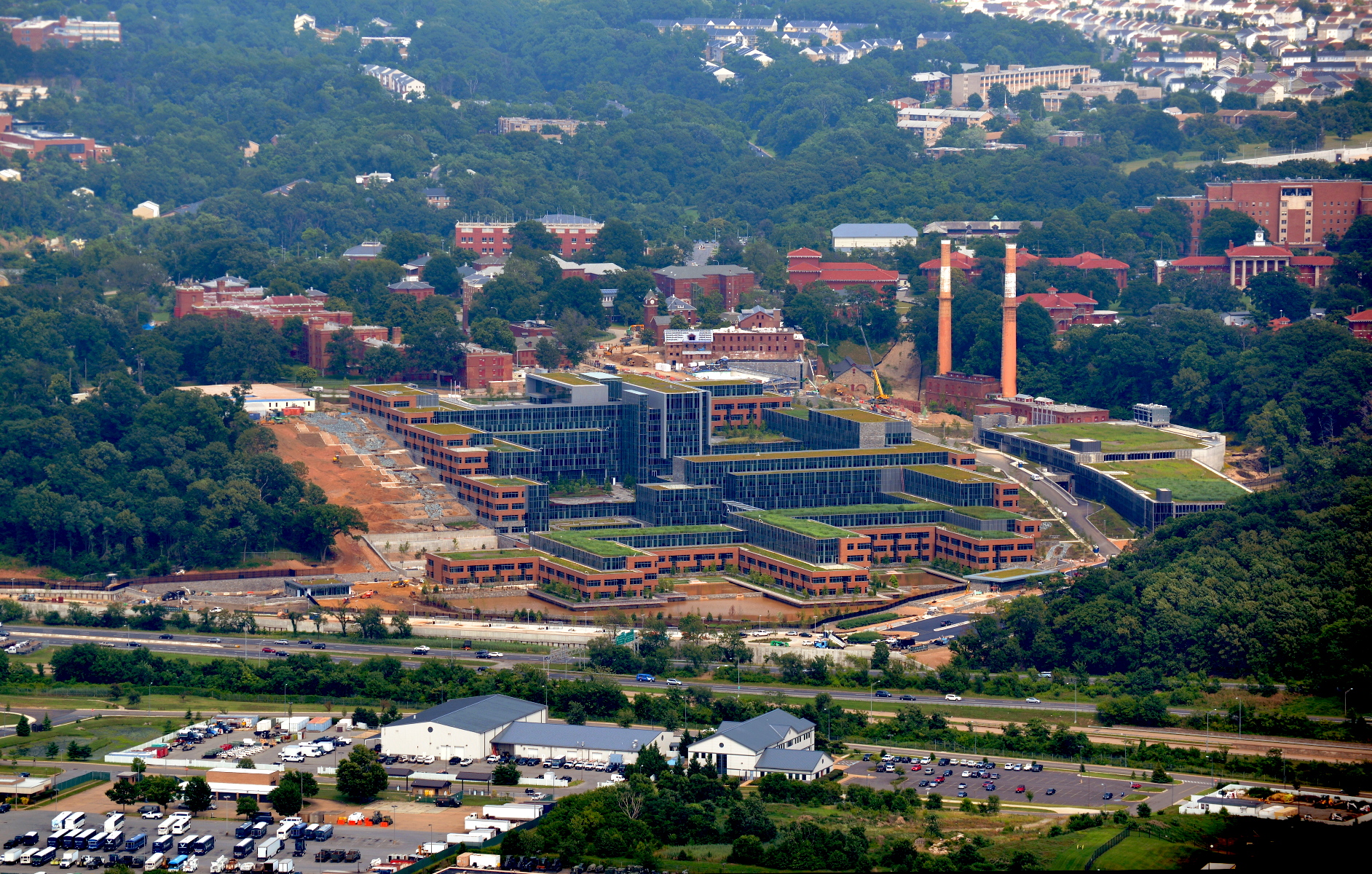
Bird’s eye view of the area, with the recently developed headquarters of the US Coast Guard Headquarters.
© Christopher P. Cavas
Beyond dealing with the pre-existing structures and DC’s humidity, the construction requirements seemed like a colossal pain from the get-go. Since the work is partially funded by ARRA (American Reinvestment and Recovery Act), the strictest regulations and accountability measures are placed on the construction and its outcome. There is no escape from public scrutiny when it comes to public money, but ever so much more with ARRA, as even now, five years later, it’s still controversial.
ARRA was President Obama’s attempt to recreate Franklin Delano Roosevelt’s “New Deal” for the digital age. The act was, and still is, seen by many Republicans as a waste of public funds. To soothe these complaints, the most amount of spin was directed to show St. Elizabeths as a “good value” to both the government and the people, with the brief stating that it would “maintain the historic character” of the site, while satisfying federal requirements and become an economically sustainable centerpiece for area. In terms of human capital, the construction estimated the total overall employment at over 5,600 people, with almost 900 to be local DC residents. Many of these jobs were infamously deemed “shovel-ready” back in 2009.
Saran Wrapped History and Ceremonial Scissors
Perhaps the biggest challenge of the brief is the vague standard of maintaining the “historic character” of St. Elizabeths. Prior to Phase 1’s completion, the National Trust listed the site for Historic Preservation as one of “The 11 Most Endangered Historic Sites in the US” and immediately public awareness suddenly and exponentially increased. Though from an investment and construction perspective the site needed to change in order to survive, it also needed to be aware of who was watching and be sensitive of its portrayal. Especially now as the designs for the DHS headquarters are underway. Currently the first few structures on the campus to be complete are a Union Credit Office (a former dormitory) and a cafeteria. The buildings don’t seemed to have changed in any sort of overtly exterior way, which may be what “preserving historic character” really means: gut the body, but leave the skin.
Though arguably the most successful of the techniques deployed by the federal government have been the DC Preservation League (DCPL) tours. Which is, according to Preservation League representative and tour guide Rebecca Miller: “A partnership with the [federal government] that allows tours to take place once a month. The tours are completely free to the public and popular with people from all walks of life.”
The DCPL has been partnering with the government for about 5 years and as part of the programmatic agreement regarding the space, the government is required to establish a permanent public access program after construction. Though, as Ms. Miller pointed out “once the space is fully occupied the tour is obviously going to change significantly. At this point, we mostly wander around. It’s not unlike you would have if you toured a lighthouse or National Park” adding “when all is said and done, it will probably become a bus tour with intense security checks.”
This partnership allows the construction to have community involvement at a scale that is simply not possible for the federal government or large-scale contractors. It is an extremely savvy move on the part of the government to pick a small, local, three person organization to meet with the public, even if each tour is partnered with government officials. The casting engineers a much different perception of the work than what might be fostered by solely a gun-toting federal agent.
It may have taken the full force, and funding, of the federal government to save the campus from abandonment, but that same size has made the government unable to wield it.
During his research trip to the US during the 1980s, Jean Baudrillard surmised that: “To them [Americans], everything is worthy of protection, embalming, restoration. Everything can have a second birth, the eternal birth of the simulacrum.” And up until the early 2000s, Baudrillard would have been right. There is an American idea, for good or ill that something historical (whatever that means) must, above all, be preserved. Preservation though, like many concepts in architecture is a vague notion that can mean different things to different people. St. Elizabeths represents a new understanding of preservation for Washington, as a building not preserved, but persevering. Rather than turning St. Elizabeths into a museum of God-knows-what, the place reinvents itself as something that speaks to the needs of a post George W. Bush government: constant vigilant observation, not unlike a doctor to a patient in a mental ward.In essentials, the government’s goal is to make the facility another Langley or Quantico, something almost mythological in its size, need and purpose (even if it requires a mythological budget). However from a construction standpoint, the idea of creating a historic site that changes, rather than a hermetically sealed monument to the past, speaks to much more shrewd government, aware of its micro and macro scale perceptions.Perhaps now the revolution won’t be televised, but it will have tours once a month from 10:00 am to 12:00 pm.
